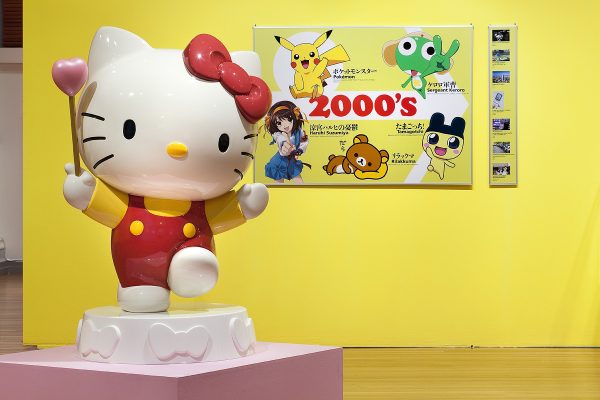
Encounters with Japanese Popular Culture
Associate Professor Carolyn Stevens, Japanese Studies, University of Melbourne, presented a talk as part of RMIT Gallery’s exhibition Japan Kingdom of Characters…
Astro Boy, Hello Kitty, Pokémon and Pocket Monsters – Welcome to the world of Japanese characters.
The 60-year history of Japan since the end of World War II is mirrored by the Japanese fondness for characters, which have permeated Japanese life from manga to TV and computer games, and especially commercial character goods. Interest in Japanese subculture, particularly anime and manga, has been increasing rapidly all over the world.
This exhibition focuses on the country’s obsession with characters and the social reality they reflect, and also examines the impact they have had on Japanese society. In recent years, interest in Japanese subculture, particularly in anime and manga, has dramatically grown all over the world. What exactly are “characters”? Why do characters appear and become popular? What kind of social reality do they reflect?
Manga and anime characters permeate every aspect of Japanese life. Countless goods even in the most out of the way shops are emblazoned with images of Hello Kitty and Pocket Monsters. According to The Japan Foundation, Japan is alone in the world in its unusual fondness for characters.
It has been shown in surveys that being with a character induces tranquillity; whereas in the past this calming effect would have been realised through personal relationships, in contemporary society where bonds of trust and communication are weakened, people establish stronger ties with characters.
Perhaps fondness for characters can be interpreted in terms of traditional aesthetic sensibility. Murakami Takashi, one of Japan’s most important contemporary artists, has suggested that anime and the expression of characters in two dimensions with an excess of open space and a lack of depth is an extension of Japanese painting techniques such as ukiyo-e.
The difference between Japanese and American characters is striking. American characters tend to emerge from cartoons and have facial features that express a strong emotion, whereas Japanese characters lack any expression.
Aihara Hiroyuki, President, Character Research Institute Co, said that the “expressionless” nature of Japanese characters is closely connected to the Japanese mentality.
“As an explanation for the bond and tranquillity people sense from characters, one might cite Japanese religious beliefs. Thus, the world of characters might be compared to the myriad of gods in Japanese culture.”
With this in mind, the character mascots often seen casually hanging from Japanese girls’ mobile phones and bags might be seen as a kind of “protective amulet”, and the fact that lining their rooms with characters creates a sense of calmness doesn’t seem so strange.
Focusing on the theme “Characters and the Japanese,” this exhibition will showcase, through visual images and panels, characters commonly known to Japanese people that have triggered fads.
RMIT Gallery will also boast a life size reproduction of a character-loving high school girl’s typical room, overflowing with the Hello Kitty characters.
This delightful exhibition will introduce the world of characters in a broader sense and examine their impact on Japanese society.

Associate Professor Carolyn Stevens, Japanese Studies, University of Melbourne, presented a talk as part of RMIT Gallery’s exhibition Japan Kingdom of Characters…

Exhibition21 Jan – 12 Mar 2011
The exhibition will explore how characters and props are conceived and designed before the complex process of animation begins. Detailing the intricate…

Exhibition20 Mar – 30 May 2015
In light of Japan’s nuclear past and present, the threat of atomic annihilation has long influenced Japanese artists. This exhibition will focus…

Exhibition15 Mar – 24 Apr 2004
Year’s Best Cartoons 2003 Behind the Lines is a selection of the top works entered in the National Museum of Australia’s 2003…